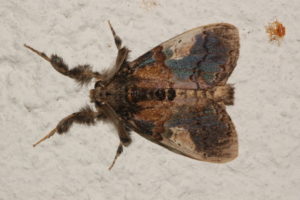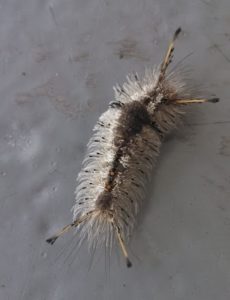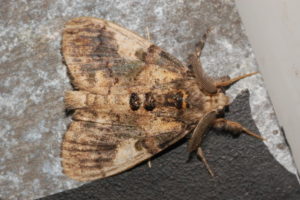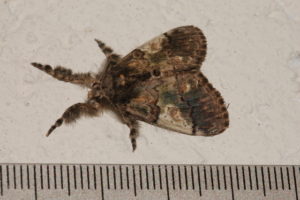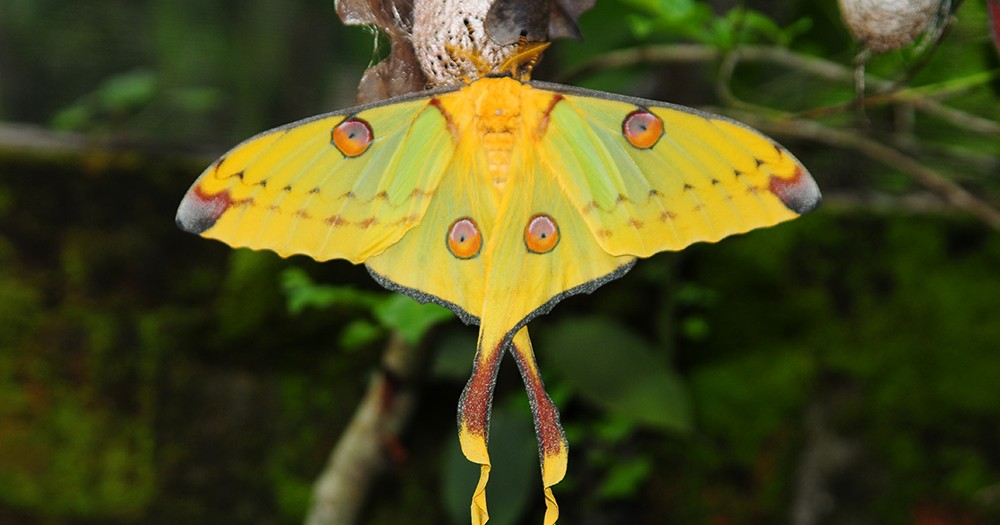Southern Tussock Moth (Dasychira meridionalis)
The southern tussock moth is a member of the family of Erebidae moths. It is native to North America, primarily in the southeastern United States.
discoverlife.org
Scientific Classification
- Family: Erebidae
- Genus: Dasychira
- Scientific Name: Dasychira meridionalis
Description and Identification
Larva
The larvae are black and white. Some specimens can be seen with orange dots all over their body, but those are mites that use the caterpillar as a mode of transport. They have long, black, hairy antennae and two black spots – a large one at the mid-section and another longer, thinner one at the rear.
Pupa
After fully maturing, the caterpillar begins to pupate.
Adult Moth
Sexual Dimorphism: Present. The males have prominent feathery antennae.
Color and Appearance
They have an earthy appearance, with a mixture of gray, green, and purple shades. The legs are covered in hair.
When the wings are opened, they appear to be brown mixed with light patches near the edges. When the wings are closed, the colors and patterns remain.
Average wingspan: Not recorded
Flight Pattern: Erratic
Season: April to July
Egg
Females lay eggs close to the host plants after mating.
Quick Facts
| Distribution | southeastern United States |
| Habitat | Deciduous woodlands |
| Lifespan of Adults | 2-3 months |
| Host Plants | Primarily oak; other deciduous trees |
| Adult Diet | Does not feed |
Scientific Classification
- Family: Erebidae
- Genus: Dasychira
- Scientific Name: Dasychira meridionalis

